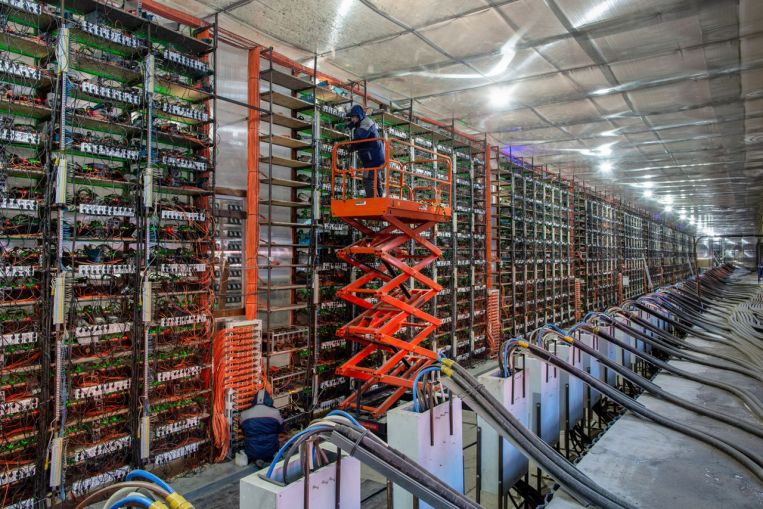(NYTIMES) – Cryptocurrencies have emerged as one of the most captivating, yet head-scratching, investments in the world. They soar in value. They crash. They’ll change the world, their fans claim, by displacing traditional currencies like the dollar, rupee or ruble.
And in the process of simply existing, cryptocurrencies like Bitcoin, one of the most popular, use astonishing amounts of electricity.
The process of creating Bitcoin consumes around 96 terawatt-hours of electricity annually, more than is used by the Philippines, a nation of about 110 million.
That usage, which is close to half a per cent of all the electricity consumed in the world, has increased about tenfold in just the past five years.
The Bitcoin network uses about the same amount of electricity as Washington state does in a year. And more than one-third of what residential cooling in the United States uses up. Indeed, it uses up more than seven times as much electricity as all of Google’s global operations.
Why is it so energy-intensive?
For a long time, money has been thought of as something you can hold in your hand – say, a dollar bill. A government prints some paper and guarantees its value. On the Internet, things can get more complicated.
In 2008, an unknown person or persons using the name Satoshi Nakamoto published a proposal to create a cash-like electronic payment system that would do exactly that: cut out the middlemen. That’s the origin of Bitcoin.
Bitcoin users wouldn’t have to trust a third party – a bank, a government or whatever – because transactions would be managed by a decentralised network of Bitcoin users. In other words, no single person or entity could control it.
All Bitcoin transactions would be openly accounted for in a public ledger that anyone could examine, and new bitcoins would be created as a reward to participants for helping to manage this vast, sprawling, computerised ledger. But the ultimate supply of bitcoins would be limited. The idea was that growing demand over time would give bitcoins their value.
Today, a single bitcoin is worth about US$45,000 – although that could vary wildly by the time you read this – and no one can stop you from sending it to whomever you like.
However, as it happens, managing a digital currency of that value with no central authority takes a whole lot of computing power.
It starts with a transaction
Let’s say you want to buy something and pay with Bitcoin. The first part is quick and easy: You would open an account with a Bitcoin exchange like Coinbase, which lets you purchase Bitcoin with dollars. You now have a “digital wallet” with some Bitcoin in it. To spend it, you simply send Bitcoin into the digital wallet of the person you’re buying something from.
But that transaction must first be validated by the Bitcoin network. This gets to the very heart of the whole Bitcoin bookkeeping system: the maintenance of the vast Bitcoin public ledger. And this is where much of the electrical energy gets consumed.
A global guessing game begins
All around the world, companies and individuals known as Bitcoin miners are competing to be the ones to validate transactions and enter them into the public ledger of all Bitcoin transactions. They basically play a guessing game, using powerful, and power-hungry, computers to try to beat out others. Because if they are successful, they’re rewarded with newly created Bitcoin, which of course is worth a lot of money.
This competition for newly created Bitcoin is called “mining”. An article published by Braiins, a Bitcoin mining company, provides a good analogy: Imagine you’re at a casino and everyone playing has a die with 500 sides. The winner is the first person to roll a number under 10.
The more computer power you have, the more guesses you can make quickly. So, unlike at the casino, where you have just one die to roll at human speed, you can have many computers making many, many guesses every second.
That’s why Bitcoin miners now have warehouses packed with powerful computers, racing at top speed to guess big numbers and using tremendous quantities of energy in the process.
The winner of the guessing game validates a standard “block” of Bitcoin transactions, and is rewarded for doing so with 6.25 newly minted bitcoins, each worth about US$45,000. So you can see why people might flock into mining.
Growing energy appetite
Bitcoin mining means more than just emissions. Hardware piles up, too. Everyone wants the newest, fastest machinery, which causes high turnover and a new e-waste problem. Mr Alex de Vries, a Paris-based economist, estimates that every year and a half or so, the computational power of mining hardware doubles, making older machines obsolete. According to his calculations, at the start of this year, Bitcoin alone was generating more e-waste than many mid-sized countries.
“Bitcoin miners are completely ignoring this issue, because they don’t have a solution,” said Mr de Vries, who runs Digiconomist, a site that tracks the sustainability of cryptocurrencies. “These machines are just dumped.”
Join ST’s Telegram channel here and get the latest breaking news delivered to you.
Source: Read Full Article
